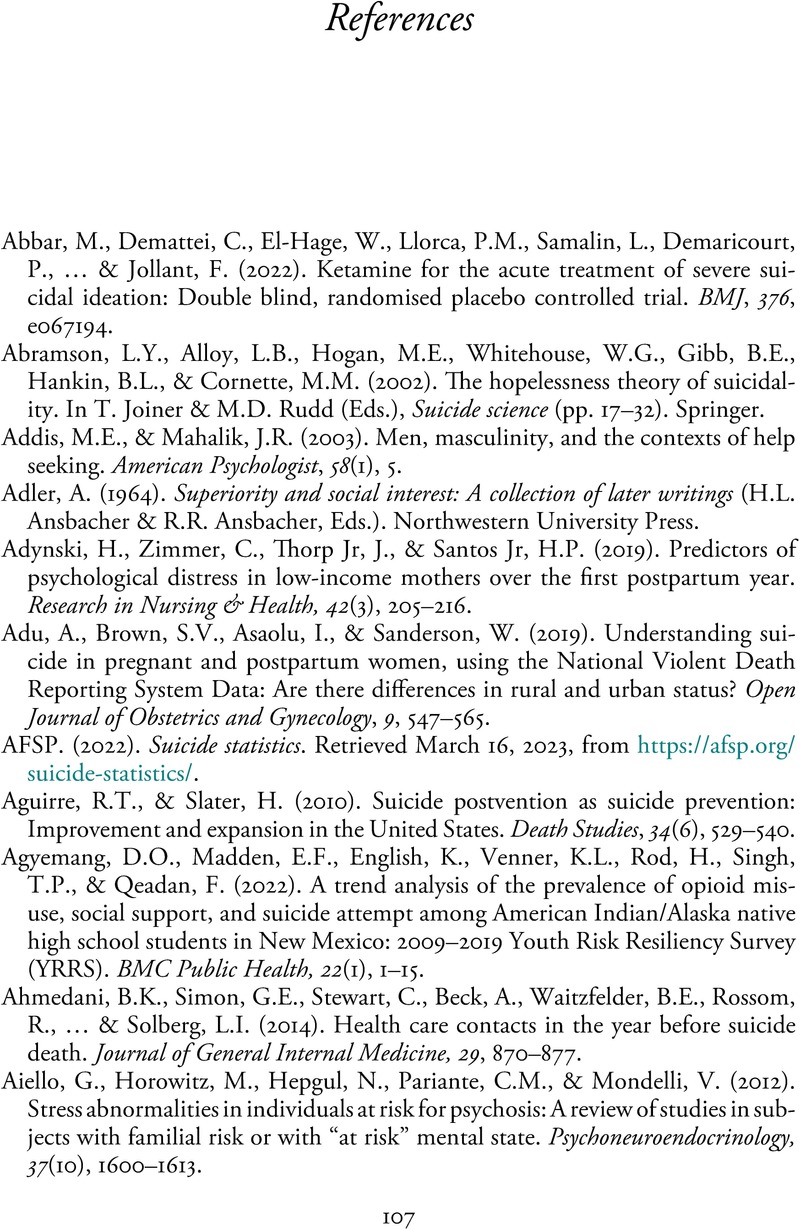Book contents
- Understanding Suicide in the United States
- Understanding Suicide in the United States
- Copyright page
- Dedication
- Contents
- Figures
- Tables
- Boxes
- Preface
- Chapter 1 A Brief View on the Social History of Suicide
- Chapter 2 Pain, Suffering, and Buffering
- Chapter 3 Allostasis
- Chapter 4 Suicide Demographics in the United States
- Chapter 5 Prevention, Identification, and Intervention
- Chapter 6 Building Resilient Individuals, Communities, and Societies to Prevent Suicide
- Chapter 7 Hope
- References
- Index
- References
References
Published online by Cambridge University Press: 12 October 2023
- Understanding Suicide in the United States
- Understanding Suicide in the United States
- Copyright page
- Dedication
- Contents
- Figures
- Tables
- Boxes
- Preface
- Chapter 1 A Brief View on the Social History of Suicide
- Chapter 2 Pain, Suffering, and Buffering
- Chapter 3 Allostasis
- Chapter 4 Suicide Demographics in the United States
- Chapter 5 Prevention, Identification, and Intervention
- Chapter 6 Building Resilient Individuals, Communities, and Societies to Prevent Suicide
- Chapter 7 Hope
- References
- Index
- References
Summary

- Type
- Chapter
- Information
- Understanding Suicide in the United StatesA Social, Biological, and Psychological Perspective, pp. 107 - 176Publisher: Cambridge University PressPrint publication year: 2023



